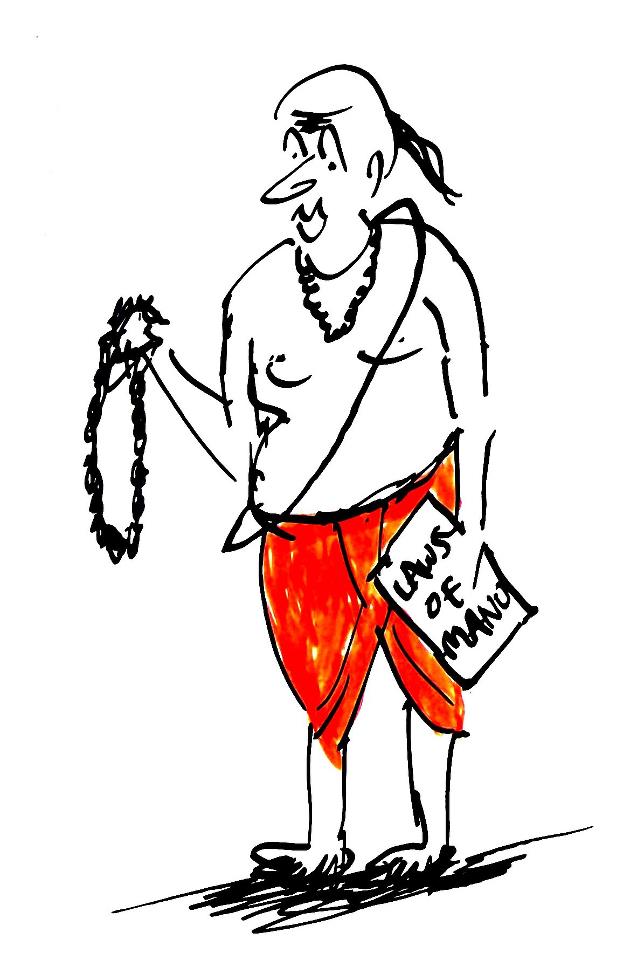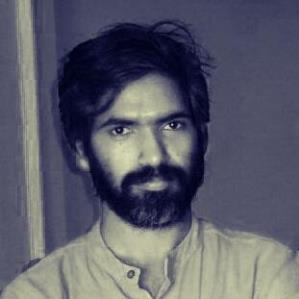~ Caste in cinema and music: the Kerala experience ~
A S Ajith Kumar talks to Dalit Camera
Dalit Camera: Through Un-Touchable Eyes
This is the first part of an interview with A S Ajith Kumar, writer, musician and filmmaker based in Trivandrum. The interview was conducted by Radhika Pai and Gopika Nangia after the release of Ajith’s documentary 3D Stereo Caste, a few months ago.
(Transcribed and translated by Sudeep K S)
Caste in Cinema
In Kerala, a lot is being written about Dalit history, Dalit studies and caste in general. But the debate on caste is yet to make its presence felt in the visual media like cinema. How to bring the question of caste to the movies, to the screen, is a big challenge.
{youtube}9_srujpVMuk{/youtube}
We have been writing for a long time. Over time we have understood how to write about caste. Dalits and Adivasis face various kinds of discrimination in various places, and we are more or less able to write about it. But we are still not able to talk about caste in media like cinema.
Caste is very prominent in the mainstream films – no matter whether it is ‘art’, ‘commercial’ or ‘parallel’. It may not be very obvious that it is caste playing there. For instance consider this character in the film ‘Aryan’. The hero (Mohanlal) tells a Dalit police officer that it is his inferiority complex that is the problem. Now we understand that it is an issue related to the politics of reservations. When a Dalit officer comes into a top position, it becomes an issue for the upper-castes in multiple ways. This attitude causes clashes in society. We can see many such characters.
In Malayalam films, the lead characters are almost always either from a middle class Nair family, or Syrian Christian. If you talk of complexion, the hero and heroine are fair and it is the trouble-makers who are dark. The thugs are dark-skinned, with some odd features – usually a Muslim or a Dalit. As I said the casteism may not be very obvious, it may appear like something else. It is not like the caste atrocities, seen usually. Even when there is a depiction of caste atrocities, it is shown as something done by some bad guys, and not as a problem with the system. Recently there was this film ‘Celluloid’ in Malayalam. It talks about caste. But if we take a close look, caste is not presented as a problem in the existing system. Tactfully they have placed it as a problem of the ‘old times’. ‘Those days there was caste, not now‘. Thus it ends up merely as a critique against some casteists of the past, by the liberal upper-castes of today. They think that their ancestors have done this, but we are against it. By doing it, they are trying to establish that they have become casteless. Similarly the film says that there are vestiges of caste in some people in the modern times. That is only the ‘vestiges’, there is no caste left in the system. As if casteism remains in certain people, like the character that resembles writer Malayattoor Ramakrishnan in the film.
This way there is a very liberal approach on the question of caste today. Most of the Nairs and Syrian Christians are now ‘against caste’, and they think they are beyond caste. They will talk against the casteism of yesteryears. Or against the casteism that ‘still exists’ in other states- ‘In Bihar, in other north Indian villages, in Tamil Nadu’. As if in Kerala there is no caste in the public space now. Especially, for the upper castes!. Those who talk caste, those who have caste, are now the subalterns, the Dalits and Adivasis! There is such a shift. Thus the discussions on caste in Kerala have become quite complex.
It reflects in the films also. There have been extremely stereotyped Dalit characters till recently in films, and now there are some films that claim to criticize casteism, in a certain manner. Even in Celluloid, the baggage of caste is on the character of P K Rosy. She appears as a symbol of caste. J C Daniel has no caste, nobody else has any caste. And in the contemporary times, there are some people who still carry the vestiges of caste. But the ‘person of caste’ is P K Rosy. This is the status of caste in Malayalam films.
Caste appears in art films also. Here also it may appear disguised. In films of people like Adoor Gopalakrishnan – he follows the style similar to what MT did in Malayalam literature. Most of his films are about the crisis of the nair self. That way there is not much difference between art films and commercial films. If at all there is some change, it is in the commercial films. Because it has different kinds of viewers, and there is an interaction happening. Cinema is not always an expression of power from the top. There is an intervention from the audience as well. In art films, usually there is no such interaction allowed. They say we sit and watch the art cinema, some people ‘understand’ it, some would need a training to understand it etc. But in the popular films there is space for such an intervention. The audience also has a role in the production of a film and in the discourse it creates. So there are some changes happening because of that. That is probably why people like Kalabhavan Mani are coming into this field.
Still not many Dalits are entering Malayalam cinema field. Even in the discussions around cinema, we usually avoid talking about how caste works in the cinema industry. Most of the discussions on caste move around more simple issues like absence of Dalits in Malayalam cinema: as camera-persons, as directors – on the technical side. That is indeed an issue. At the same time caste works in the entire discourse of cinema, and we need to understand the complex ways in which it operates.
Challenges in addressing caste through cinema
Even now caste gets depicted in such a liberal, casual manner in Malayalam films – to make a film that criticizes the caste prevalent in our society becomes a challenge in itself. It is a crisis of sorts. One reason is this liberal approach itself, in mainstream films. Another problem is with the language of cinema, for the Dalits.
{youtube}P19NIvdkEr8{/youtube}
It works in different ways –firstly, few Dalits come into the technical side of Malayalam film industry. There are many issues related to the making of a film. Second, it needs to be studied how to bring the question of caste into the medium of cinema. It is not only about the making, we also need to learn how to watch those issues in the language of cinema. We need to develop that culture of ‘seeing caste’ also. It is different from reading caste that we have already developed to some extent. We haven’t been able to develop that culture of a Dalit cinema. Many are now trying to do documentaries and films on caste. It is still in its infancy, but we are in the process of learning. Rupesh Kumar has tried to do some documentaries about caste; there was a film on Chengara land struggle by Shibi Peter … There are such attempts in various fields. Recently there was a feature film, Papilio Buddha. I have some critical observations about that film but it is important that such films are also coming out. I think Papilio Buddha does not address the challenges of ‘filming caste’.
It is in this context that I am making my film. I also face this question, how to bring caste in a film. That involves a crisis of making a film in a place like Kerala that is considered to be progressive. Caste is not so much visible here. It is easy to write that there is casteism in so and so act. But showing it in films is difficult.
It is relatively easy to show torture. But other forms of caste discrimination that exist within the system, within the educational institutions etc may not be quite visible. Of course there is the visible form also — recently when a Dalit officer retired, there was a purification ritual performed in his office. But there are a lot of instances where it is not so visible. It is a challenge how such things could be brought to the screen. In general, the films that talk of Dalit issues in India mostly picturise atrocities or torture. They do not address this challenge, of how to bring out the ‘invisible’ casteism through the medium of cinema.
Secondly, this documentary is about music. In music, caste works in a very different manner.
Please read the next part of the interview here.
~~~










